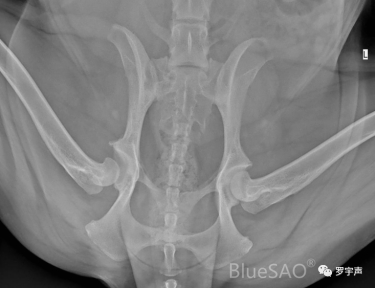【Hip dysplasia】Alaska, biological hip replacement
This is a young Alaskan Malamute with hip dysplasia. This dog suffered from chronic pain, weakness in walking, and lameness in the left hind limb. X-rays showed bilateral degenerative hip disease with acetabular deformity and osteosclerosis, and the right side was more severe than the left hip. Why is it that the left side is only limping while the right hip is more severely affected? In fact, in hip dysplasia, the movement function of bilateral hip joints and bilateral hind limbs will have a process of alternating severity. For example, if the left hip joint has recently been damaged, then the left side will have claudication and the right side will have increased weight bearing. Due to the bad hip joint, the right side has been bearing more weight for a while. The right hip joint continues to be injured and painful. The left hip joint gets repaired to some extent during this time, so there will be limping on the right side. However, once hip dysplasia occurs, it only gets worse and there is no turning back. This is the process of alternating severity.
The pet owner brought this dog to our hospital for the best possible treatment. The best treatment option for hip dysplasia is, of course, total hip replacement surgery. For the symptomatic side of the acetabulum being a little better than the asymptomatic side, how should we sequence the surgery? Should we replace the left side first or the right side first? It doesn't really matter, just communicate with the pet owner. The most important thing is that the pet owner needs to know that the dog needs hip replacement surgery on both hind limbs. This is so that the sick dog can have the best quality of life. For this Alaskan Malamute, according to the owner's wishes, we performed the hip replacement surgery on the left hind limb first.
The appropriate femoral stem prosthesis and acetabular cup prosthesis were selected after calibration according to Marker in the iBlueVet orthopaedic planning system. Preoperative planning was performed using a #7 biological femoral stem, a 20mm lateral bolt and a 28mm biological acetabular cup. Prepare +0, +3 and +6 16mm femoral head prostheses. Intraoperative testing with the femoral head prosthesis used for testing before deciding on the final femoral head prosthesis.
Plannedimplants: a #7 biological femoral stem, a 20mm lateral bolt and a 28mm biological acetabular cup, +0, +3 and +6 16mm femoral head prostheses.
Preoperative x-rays

Orthopedic Instruments We Use BlueSAO